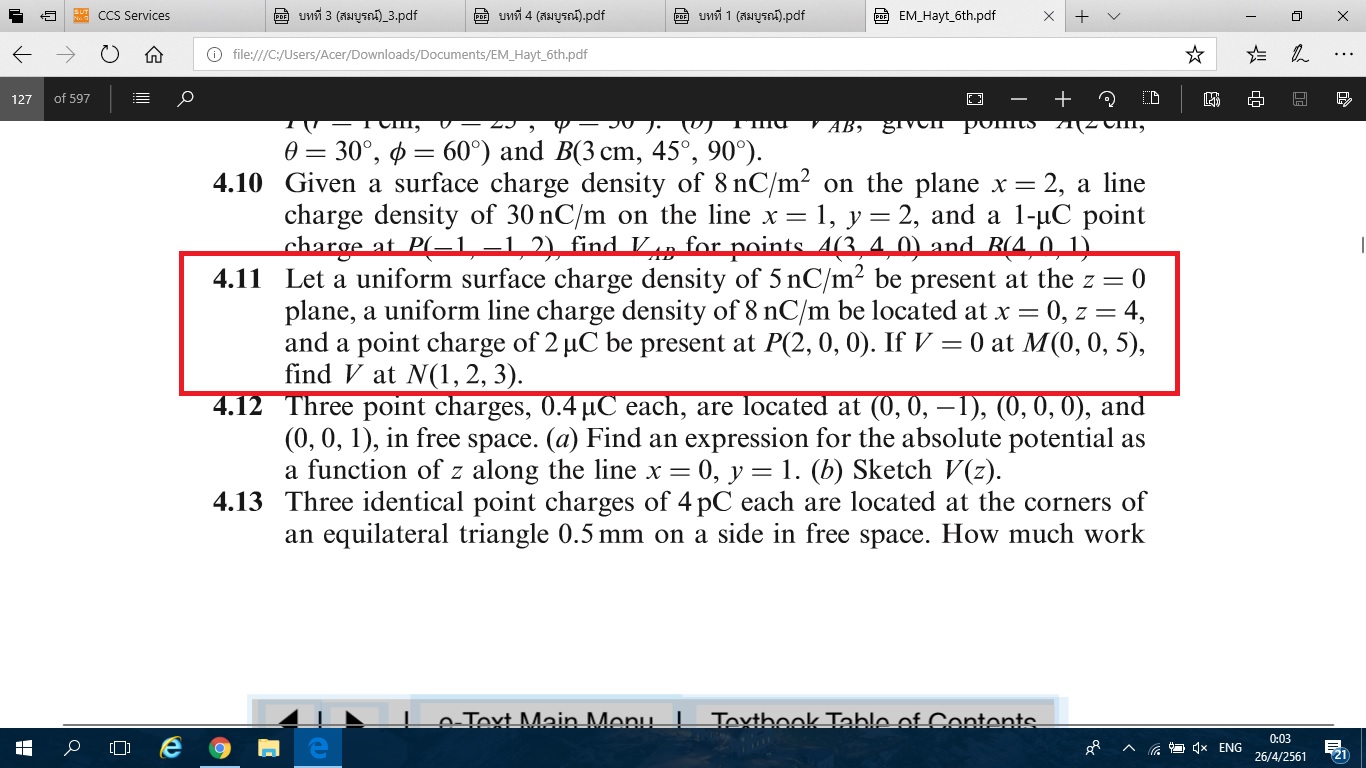Engineering Electromagnetics. How about solution?

1 Answer
Potential at a distance
#V=Q/(4piepsilon_0r)# ......(1)
Potential for the uniform sheet of charge of surface charge density
#E=sigma/(2epsilon_0)=-(delV)/(delz)#
#=>V=-int\ sigma/(2epsilon_0)dz#
#=>V=- sigma/(2epsilon_0)z+C# ........(2)
where#C# is constant of integration
On similar lines potential for uniform line charge density
#E=lambda/(2piepsilon_0rho)=-(delV)/(delrho)#
#=>V=-int\ lambda/(2piepsilon_0)1/rhodrho#
#=>V=- lambda/(2piepsilon_0)lnrho+C_1# ........(3)
where#C_1# is constant of integration
The total potential is the sum of three. Therefore we get
#V_T=Q/(4piepsilon_0r)- sigma/(2epsilon_0)z- lambda/(2piepsilon_0)lnrho+C_2# ......(4)
where we have combined constant of integration.
To calculate
#0=(2xx10^-6)/(4piepsilon_0sqrt29)- (5xx10^-9)/(2epsilon_0)xx5- (8xx10^-9)/(2piepsilon_0)ln1+C_2#
Inserting value of#epsilon_0 =8.85×10^-12\ F⋅m^-1# in above we get
#C_2=-(2xx10^-6)/(4pixx8.85×10^-12sqrt29)+ (5xx5xx10^-9)/(2xx8.85×10^-12)#
#C_2=-3.34xx10^3+ 1.41xx10^3#
#C_2=-1.93xx10^3#
Inserting various values in (4) we get
#V_T=(2xx10^-6)/(4pixx8.85×10^-12r)- (5xx10^-9)/(2xx8.85×10^-12)z- (8xx10^-9)/(2pixx8.85×10^-12)lnrho-1.93xx10^3# ........(5)
For point
#V_T(N)=(2xx10^-6)/(4pixx8.85×10^-12sqrt14)- (3xx5xx10^-9)/(2xx8.85×10^-12)- (8xx10^-9)/(2pixx8.85×10^-12)lnsqrt2-1.93xx10^3#
#=>V_T(N)=(4.81- 0.85- 0.05-1.93)xx10^3#
#=>V_T(N)=1.98xx10^3\ V#
